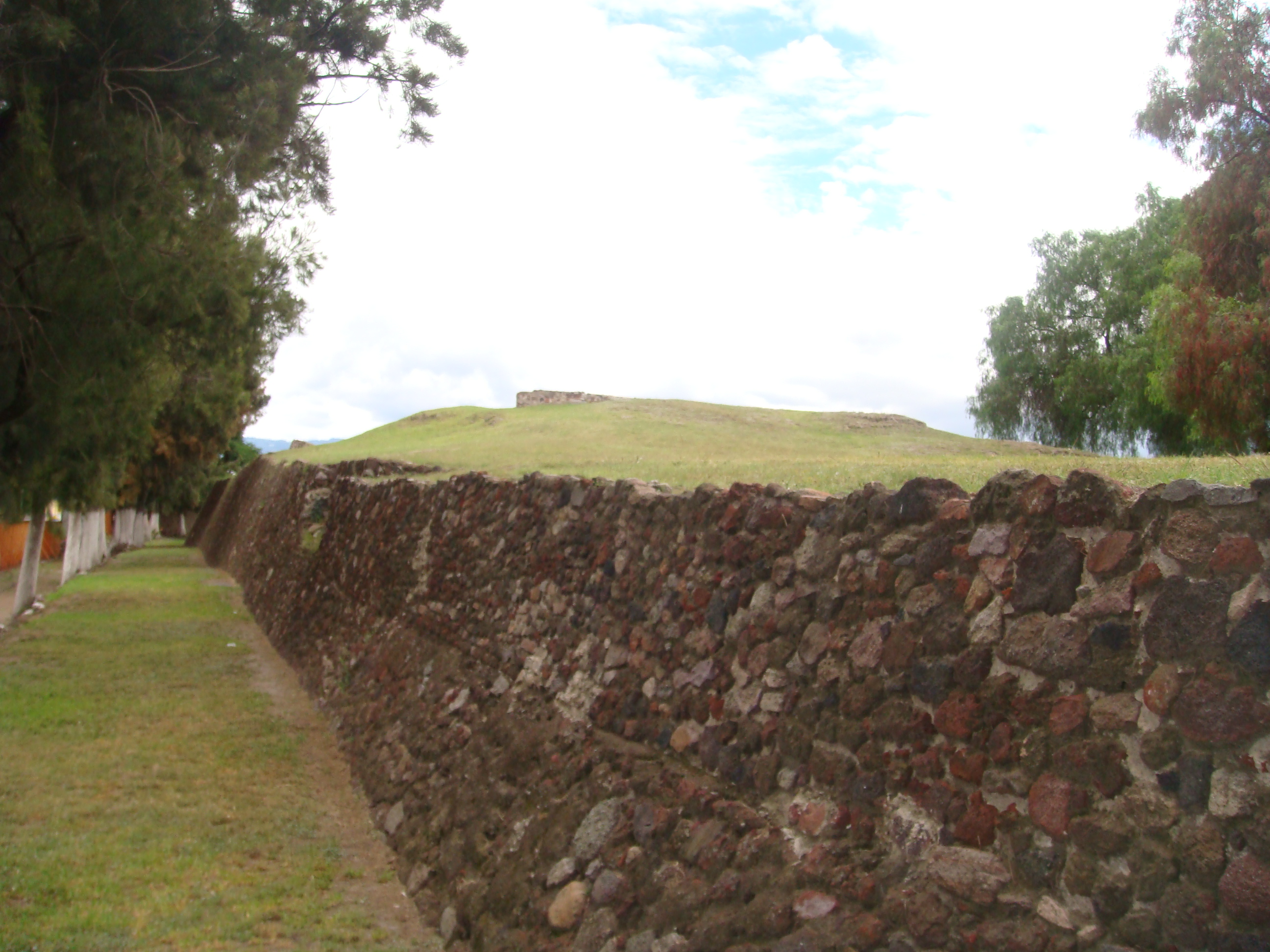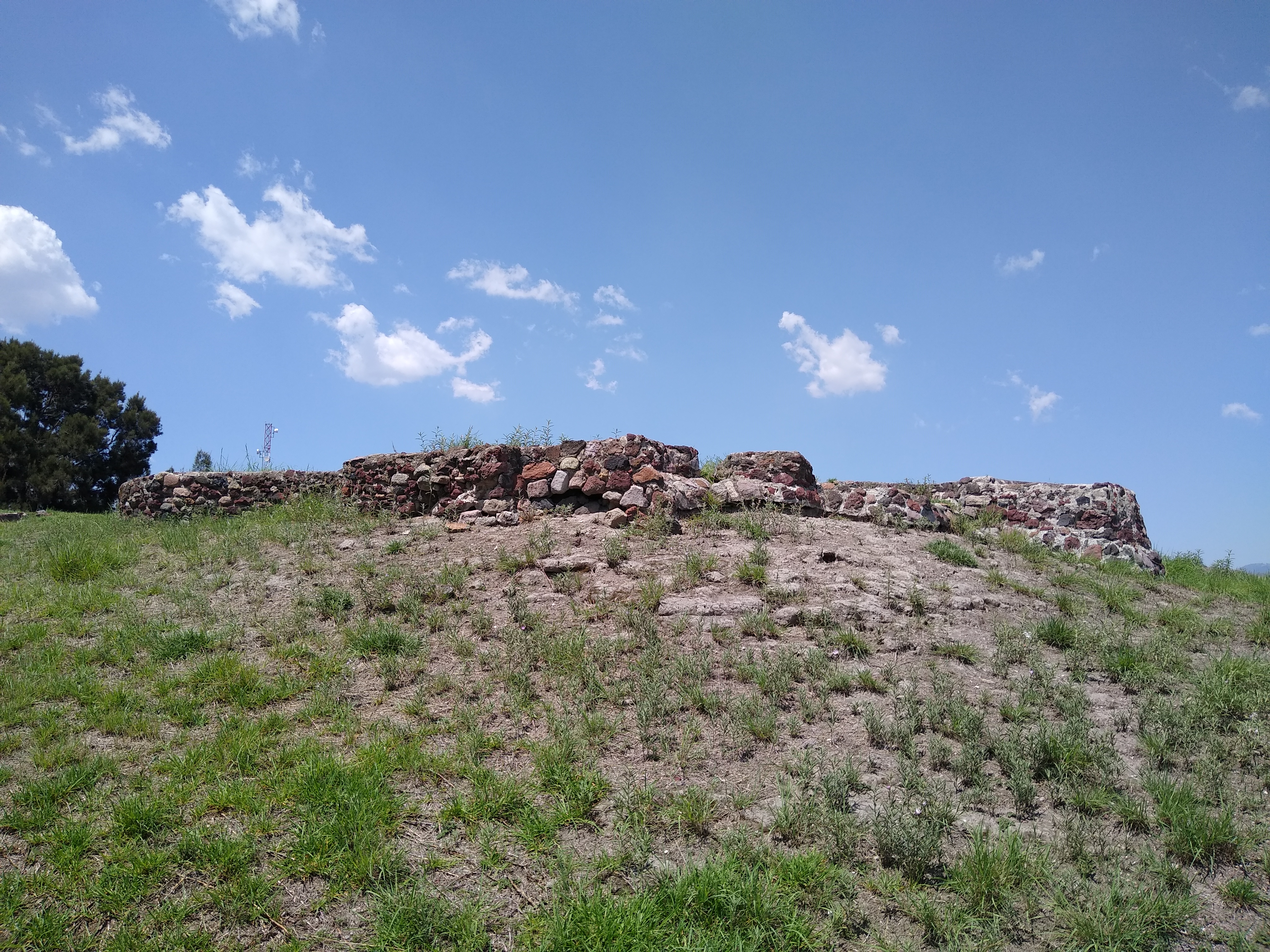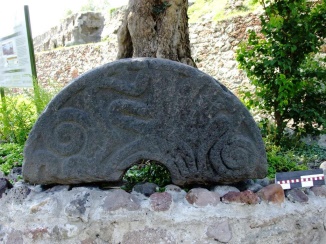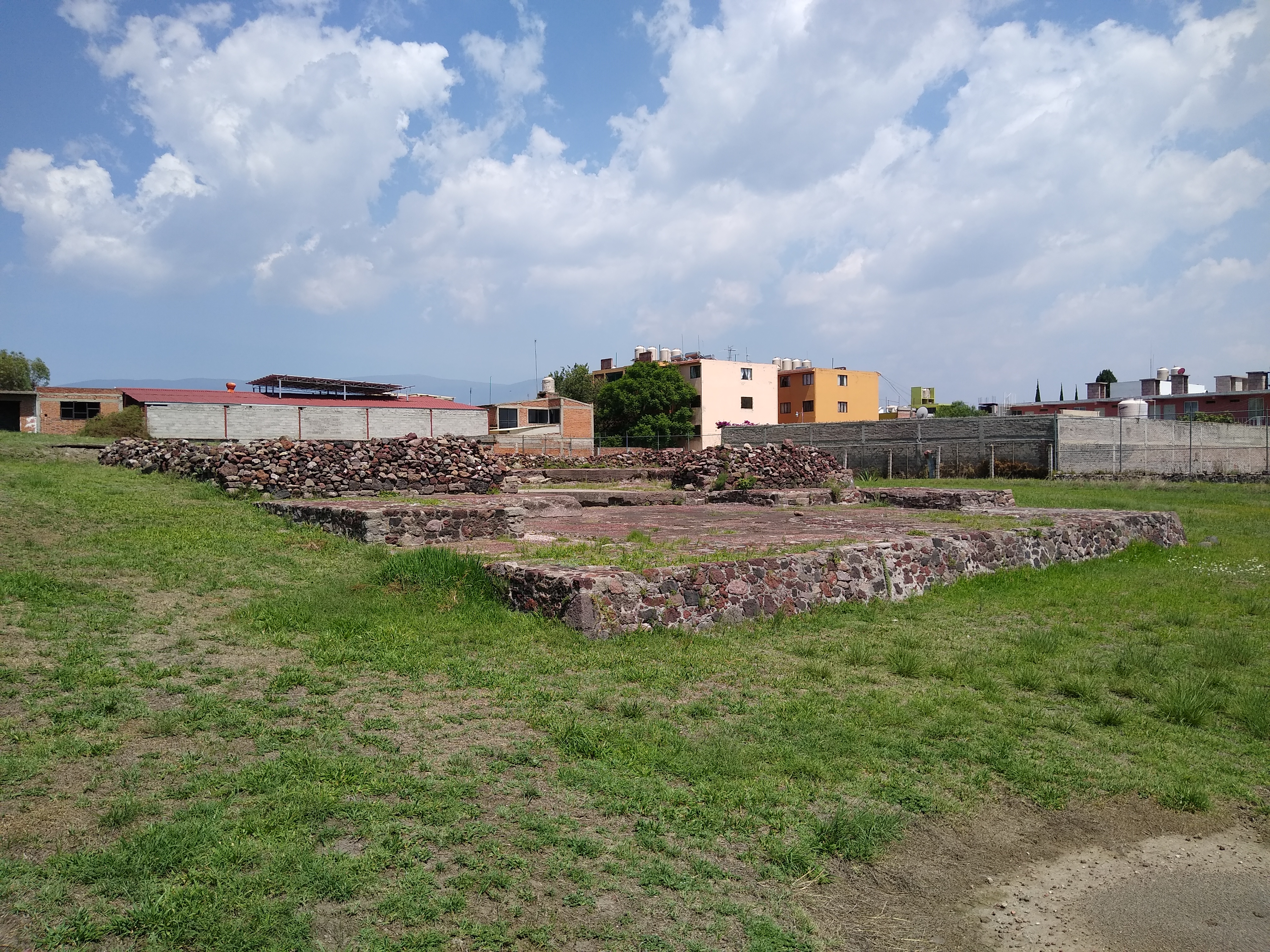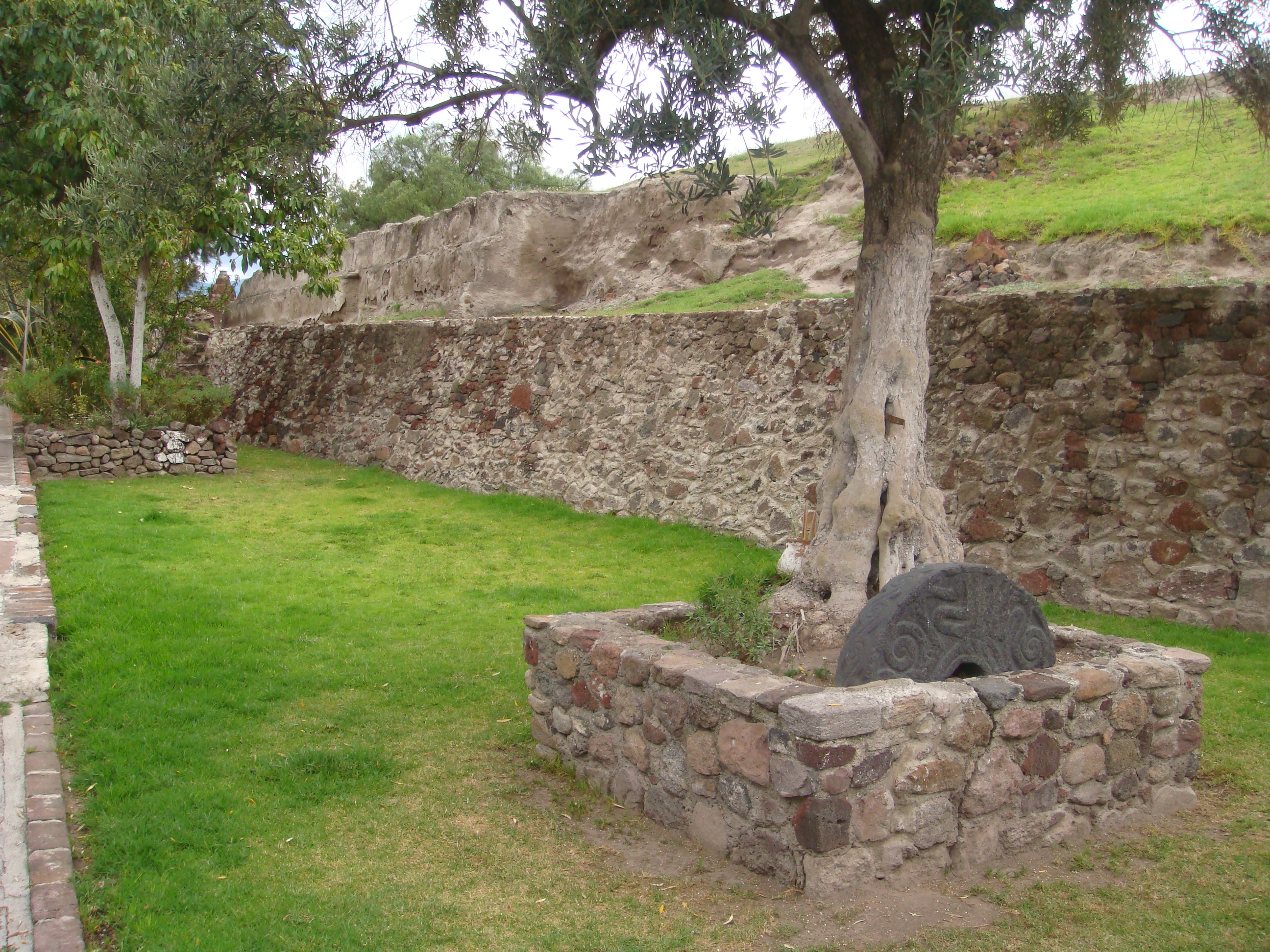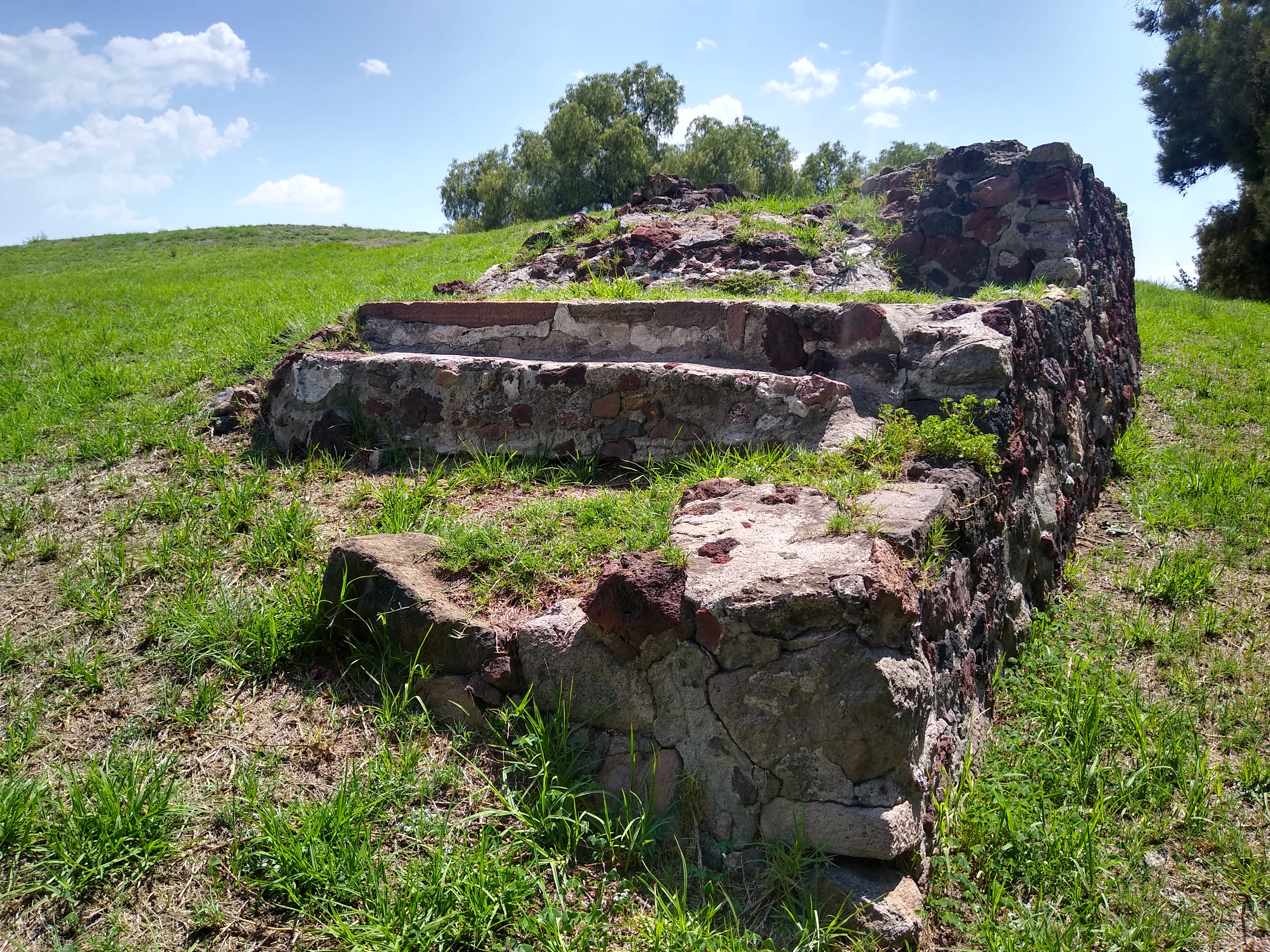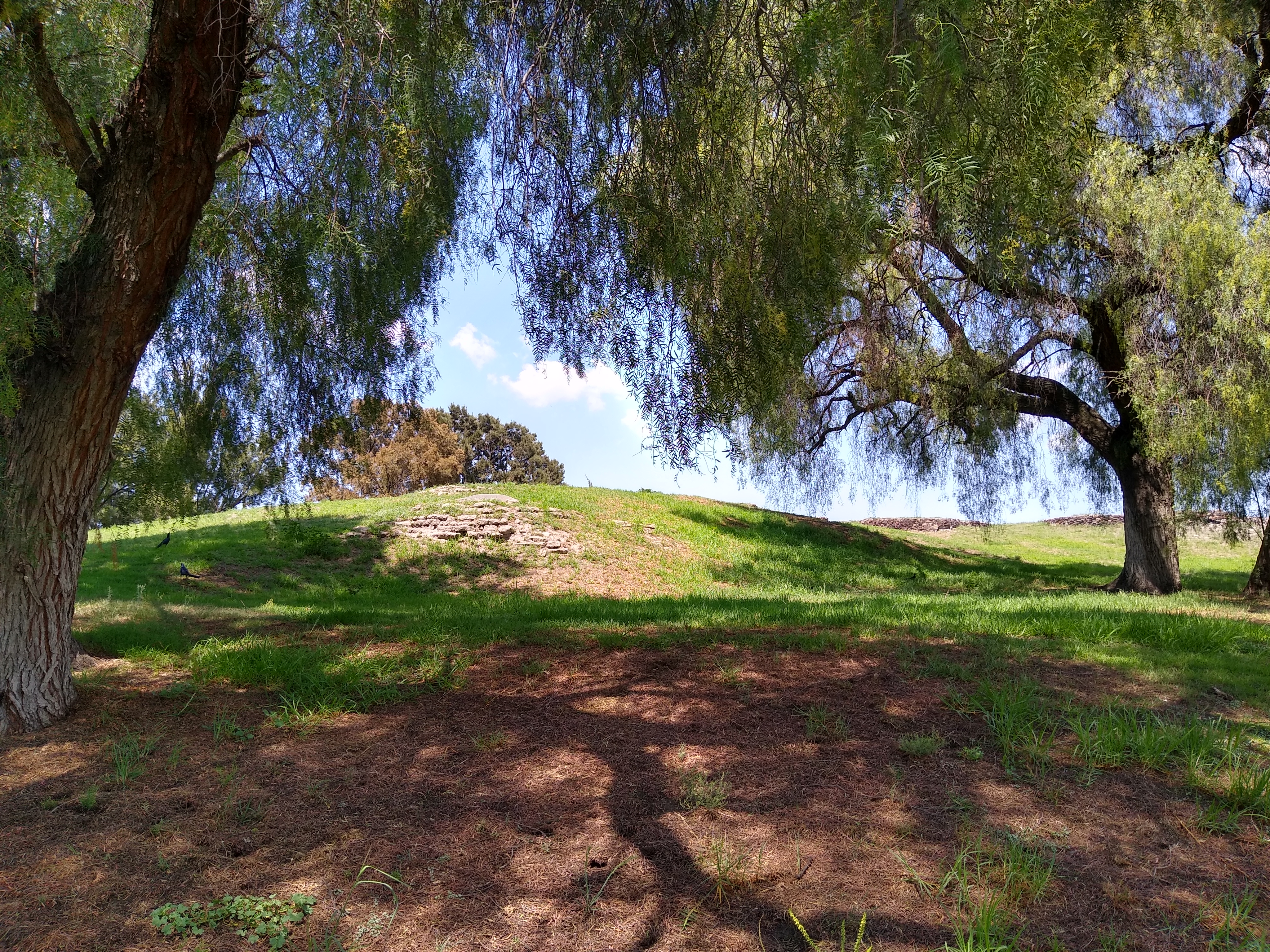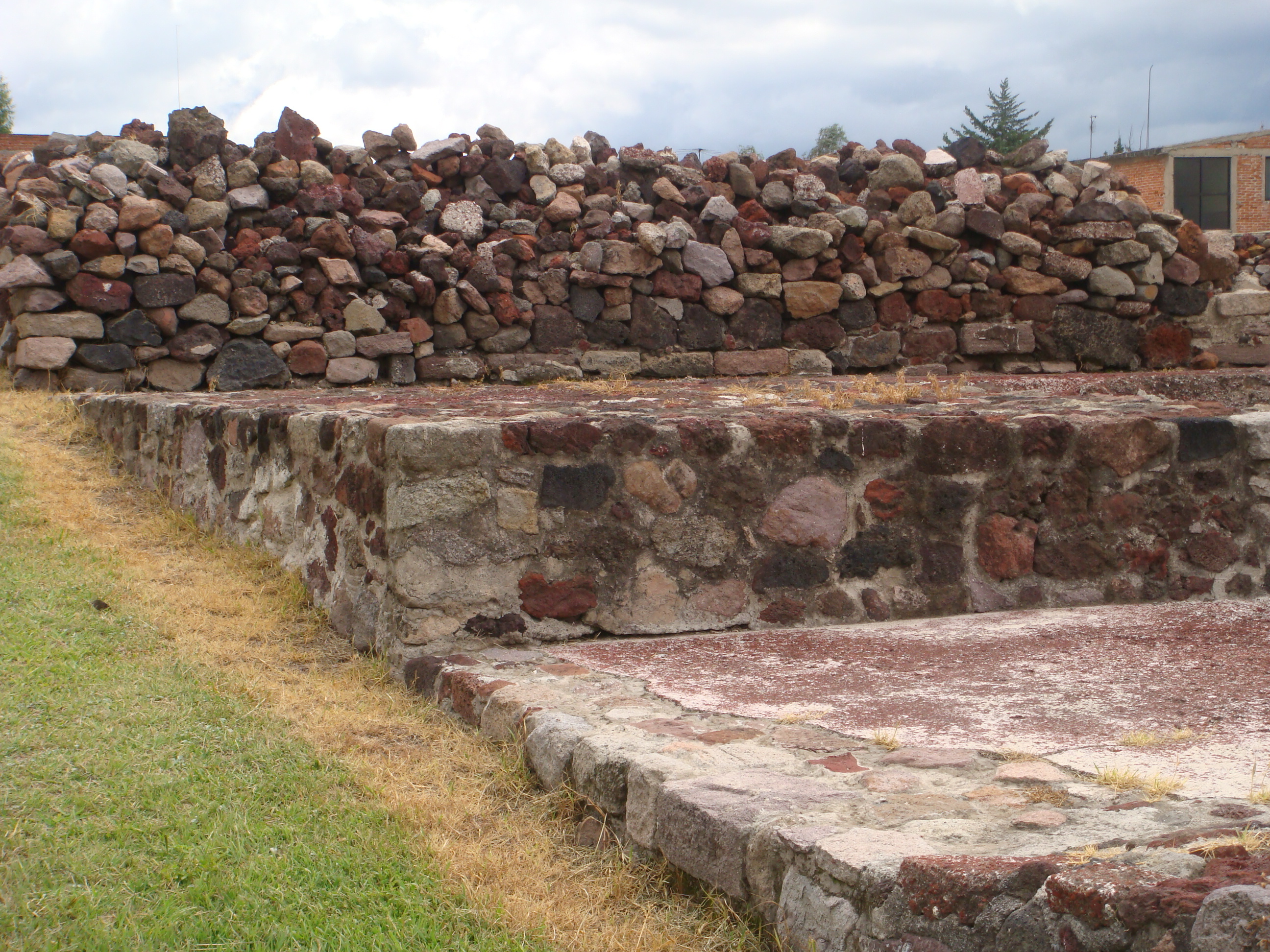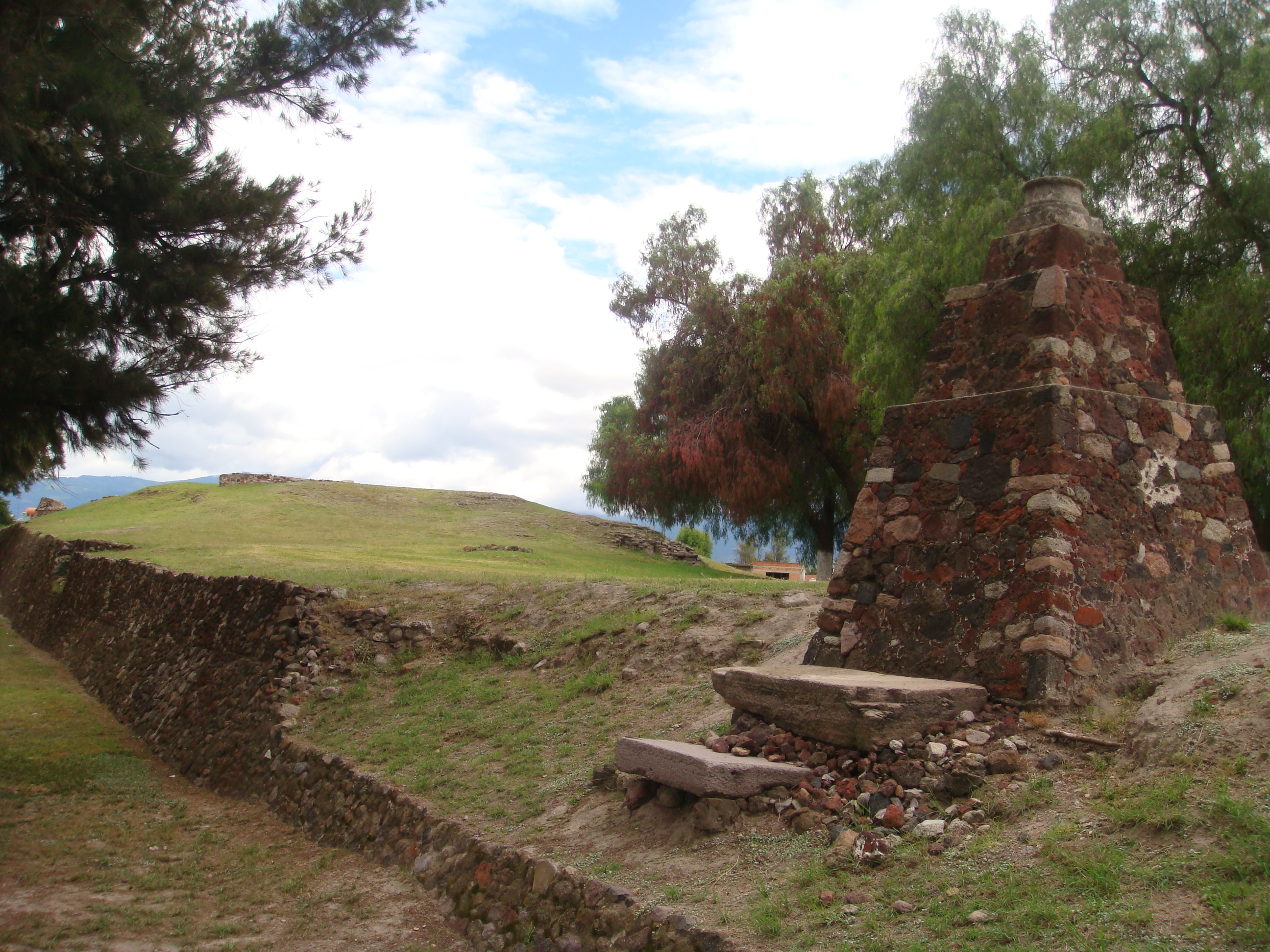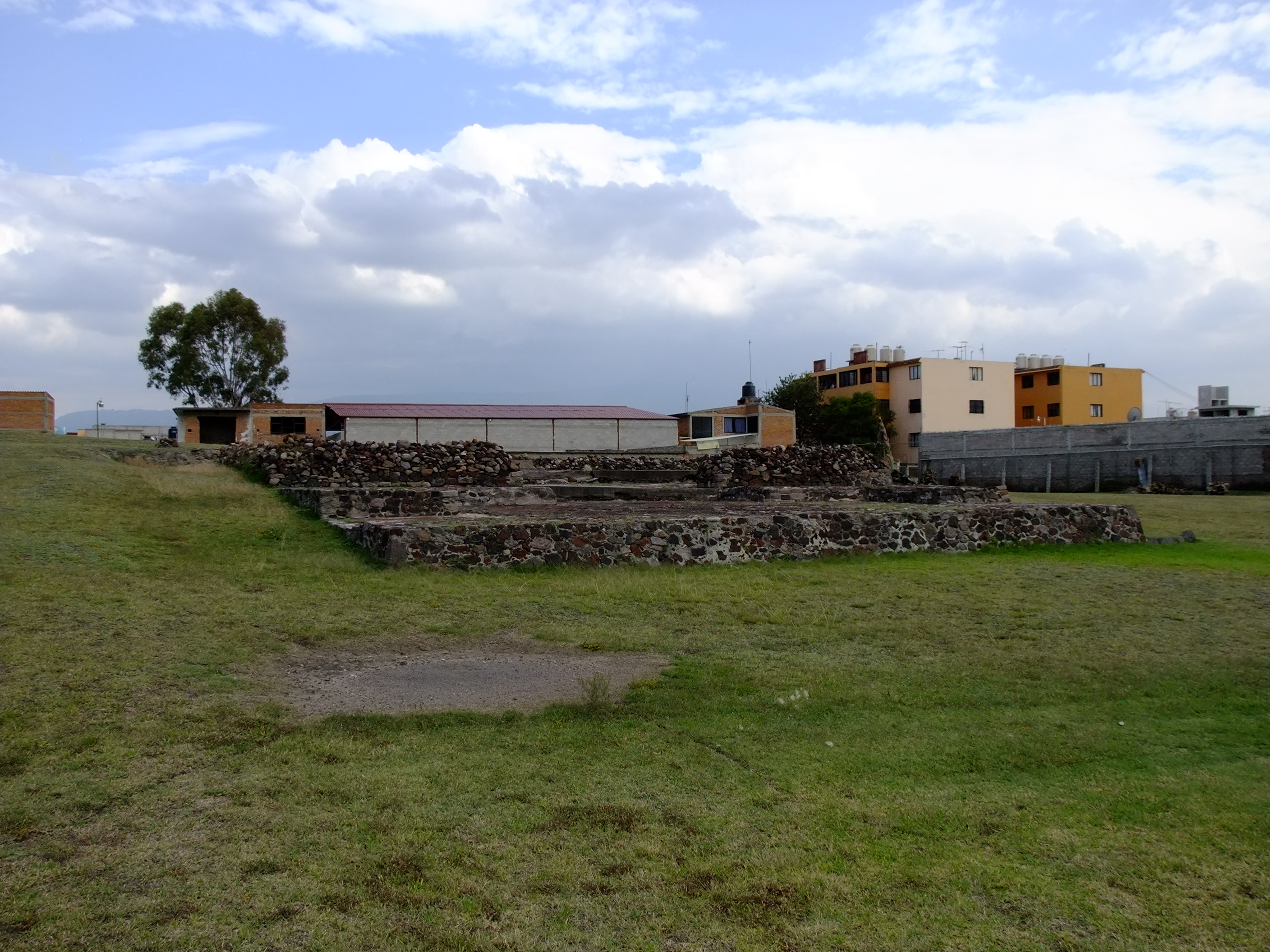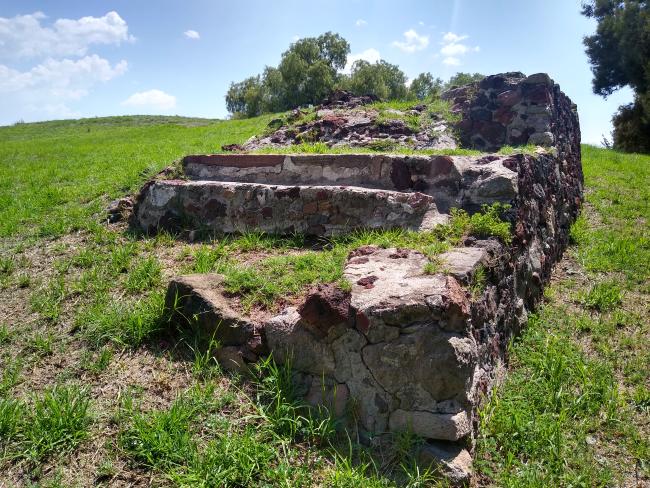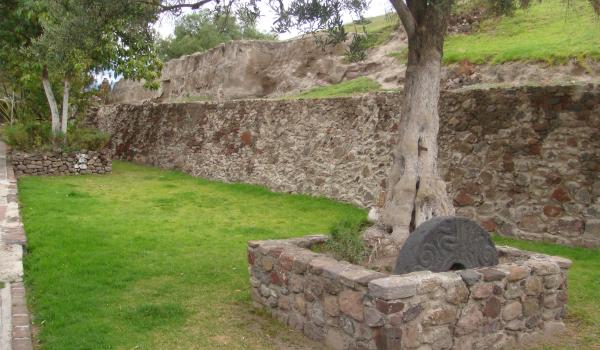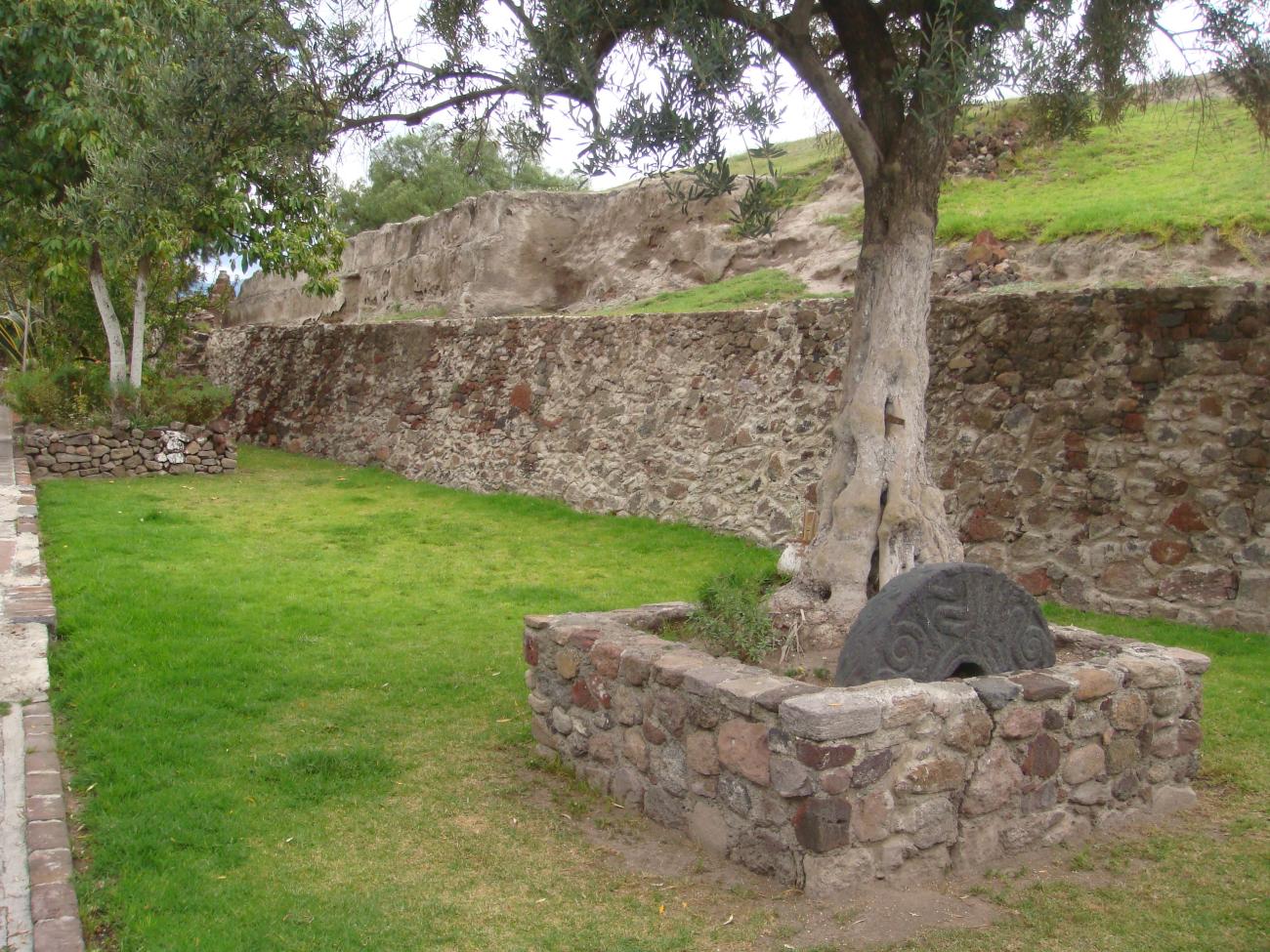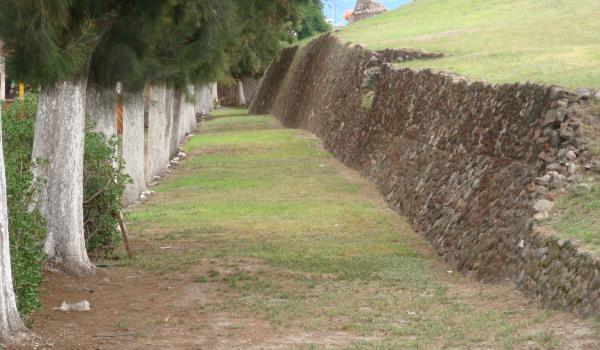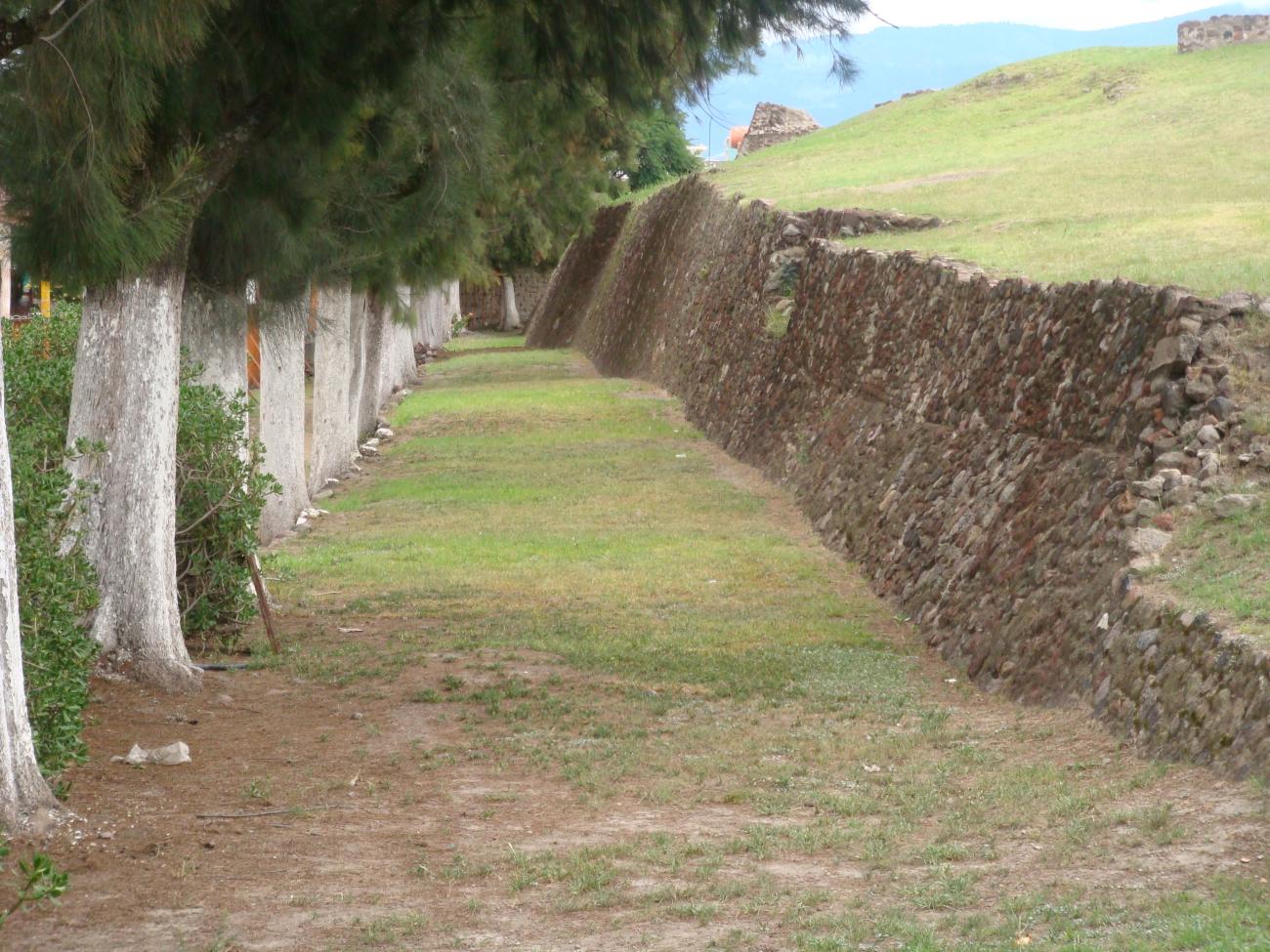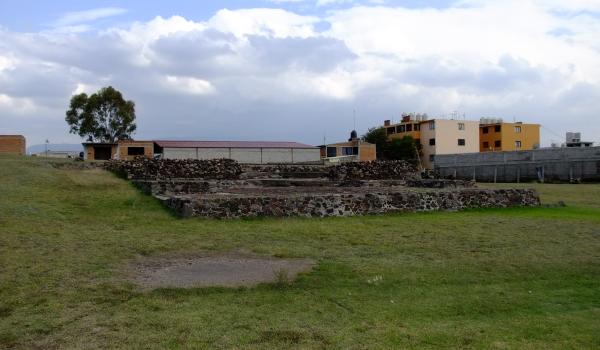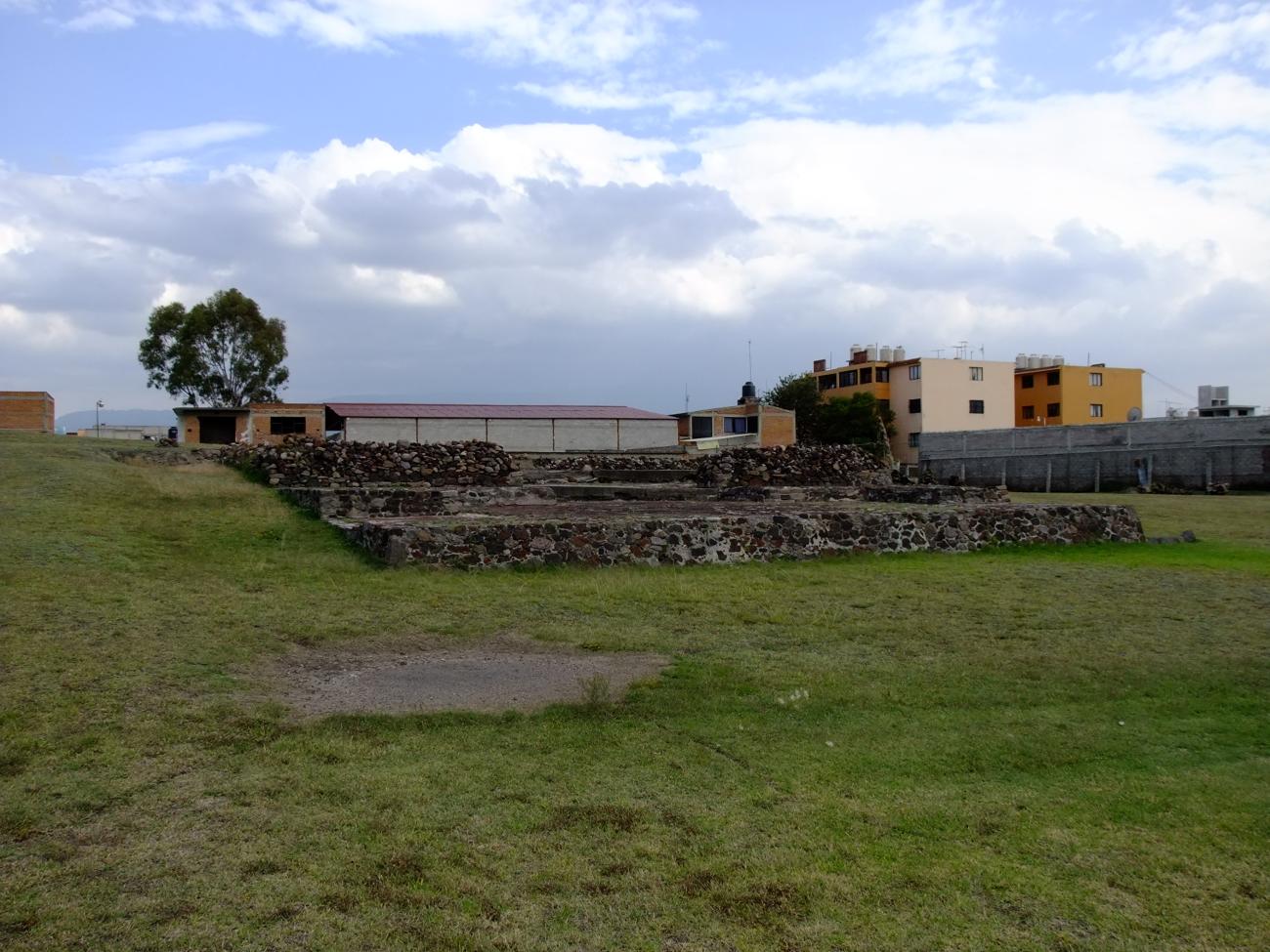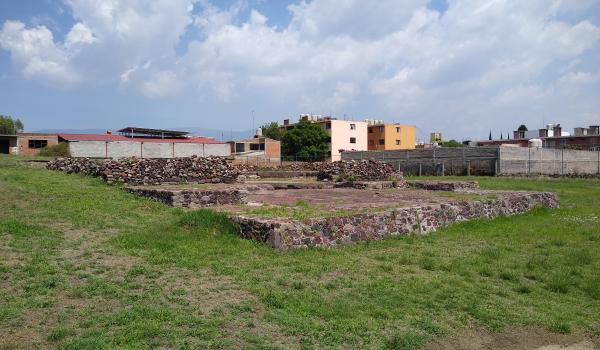Los Melones lies to the south of the city of Texcoco de Mora in the State of Mexico. The archeological evidence recovered allows us to date construction to the site to the Late Postclassic (1400 to 1450), a time at which Texcoco was the capital of Acolhuacan. It is one of the few places to preserve architectural evidence of the ancient Acolhua settlement, as several ethnic groups were involved in the region’s social development, chiefly the Otomi and Nahua, who ruled the eastern side of the basin of Mexico.
The temples and foundations of Los Melones were built with blocks of adobe (cores) faced with tezontle (volcanic rock) and plastered with stucco, which was obtained by mixing lime, sand and tezontle gravel. Due to the extraction of tezontle for reuse in the colonial period, the facings have now been lost, leaving the adobe cores exposed.
The West Building preserves two sections in which we may observe the remains of floors, a stucco wall and a sloping wall. The East Building preserves traces of stucco plaster and a fragment of stairway, as well as the remains of rooms with stucco floors, a fragment of a drainage channel and the bases of dividing walls. There appears to have been a plaza between these buildings.
The southern side preserves an area with an antechamber, marked inside from its entrance via a walkway; in the center, there is a rectangular element carved in stone with a cavity and a protrusion.
Another important detail are the two Mesoamerican ballgame markers carved in basalt, found at the site entrance.

